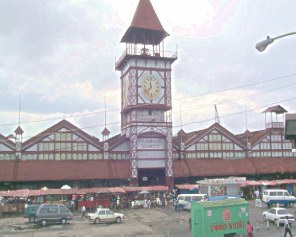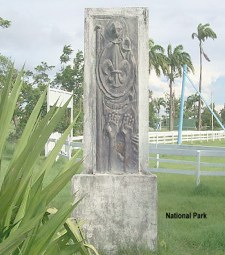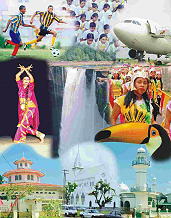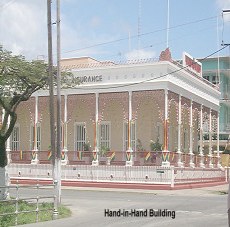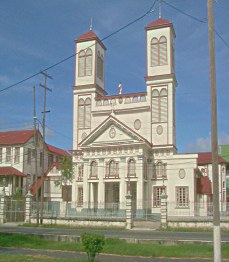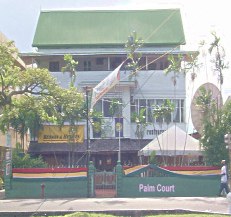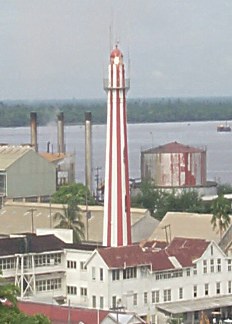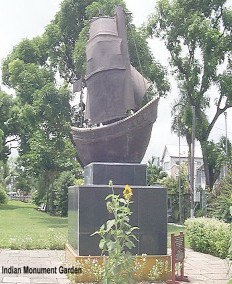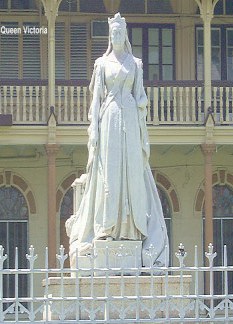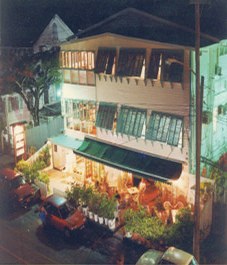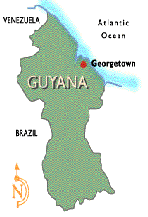
CaribLynk  | home
| home
Guyana
CaribLynk


Trinidad - Millions of miles from the real
world and just a few hours from home. Come to Trinidad and discover the most romantic, exotic and friendly island in the Caribbean. Uncrowded, unspoiled and full of unexpected pleasures. The lively home of Carnival, steel bands, calypso and limbo will fill your visit with color, rhythm and joy.
Tobago - A tranquil place to enjoy golden rays, rainbow sunsets and unforgettable beauty. Tobago, Trinidad's small companion island, lies a scant 20 miles - 32 kilometers - to the northeast. This pocket paradise contains some of the world's loveliest beauty spots, including large groves of coconut palms, miles of unspoiled beaches and the famous underwater delights of Buccoo Reef and Nylon Pool
Trinidad & Tobago
Caribbean, islands between the Caribbean Sea and the North Atlantic Ocean, northeast of Venezuela
Central America and the Caribbean
Total area: 5,130 sq km
Land area: 5,130 sq km
Tropical; rainy season (June to December
Mostly plains with some hills and low mountains
Natural Resources
Petroleum, natural gas, asphalt
Arable land: 14%
Permanent crops: 17%
Meadows and pastures: 2%
Forest and woodland: 44%
Other: 23%
International Agreements
Party to - Climate Change, Endangered Species, Hazardous Wastes, Law of the Sea, Marine Life Conservation, Nuclear Test Ban, Ozone Layer Protection, Tropical Timber 83, Wetlands; signed, but not ratified - Biodiversity
Population
1,271,159 (July 1995 est.)
Age structure:
0-14 years: 31% (female 191,627; male 198,225)
15-64 years: 64% (female 399,726; male 407,495)
65 years and over: 5% (female 40,577; male 33,509)
Nationality
Trinidadian(s), Tobagonian(s)
Ethnic divisions
Black 43%, East Indian (a local term - primarily immigrants from northern India) 40%, mixed 14%, white 1%, Chinese 1%, other 1%
Religions
Roman Catholic 32.2%, Hindu 24.3%, Anglican 14.4%, other Protestant 14%, Muslim 6%, none or unknown 9.1%
Languages
English (official), Hindi, French, Spanish
Literacy
Age 15 and over can read and write (1990)
Total population: 97%
Male: 98%
Female: 96%
Labor Force
463,900
By occupation: construction and utilities 18.1%, manufacturing, mining, and quarrying 14.8%, agriculture 10.9%, other 56.2%
Trinidad covers 4,828 square kilometers - 50 miles long by 37 miles wide. Tobago has an area of 300 square kilometers - 26 miles long by 7.5 miles wide. Both islands together have a population of approximately 1.3 million.
A Mixture of Colour and Sound and Diversity
Called "the world's most colourful festival", the Carnival Of Trinidad is a spectacle of dazzling costumes and gaiety. Hundreds of bands of masqueraders parade through cities on the Monday and Tuesday preceding Ash Wednesday, bringing traffic to a standstill. The island seems to explode with music, fun, and dancing.
Some of the Carnival costumes cost hundreds of dollars. "Bands" might depict the birds of Trinidad, such as the scarlit ibis and the keskidee or a bevy of women might come out in the streets dressed as cats. Costumes are also satirical and comical.
Trinidad, of course, is the land of calypso, which grew out of the folk songs of the African-West Indian immigrants. The lyrics command great attention, as they're rich in satire and innuendo. The calypsonian is a poet-musician, and lyrics have often been capable of topplings politicians from office. In banter and bravado, the calypsonian gives voice to the sufferings and aspirations of his people. At Carnival time, the artist sings his compositions to spectators in tents. There's one show a night at each calypso tents around town, from 20:00 to midnight. Tickets for these are sold in the afternoon at most record shops.
Carnival parties, or fetes, with three or four orchestras at each one, are public and are advertised in the newspaper. For a really wild time, attend a party on Sunday night before Carnival Monday. To reserve tickets, contact the National Carnival Committee, Queen's Park Savannah, Port-of-Spain, Trinidad (868-627-1358).
You can attend rehearsals of steel bands at their headquarters, called panyards, beginning at about 19:00. Preliminary band competitions are held in the grandstand of Queen's Park Savannah in Port-of-Spain and at Skinner Park in San Fernando, beginning two weeks before Carnival.
Trinidad and its sister Tobago are the southernmost islands in the Caribbean and the closest to Venezuela. This is the home of Caribbean Carnival, the place where steelband and calypso were created. With a population continually mixed for over two centuries, it also celebrates a wide range of other big festivals, including Hindu and Muslim ones. Naturalists, especially bird-watchers, are attracted by the huge variety of flora and fauna. Tobago, the quieter island, is one of the Caribbean's great unspoiled resorts, with beautiful beaches, outstanding diving, coral reefs, championship golf, and a rich Heritage Festival each summer.
Getting Around:
Piarco International Airport is about 26 km from the capital, Port of Spain. In Tobago, Crown Point International Airport is 8km from Scarborough. From both airports, taxis to town and to the major hotels have fixed fares. Both have car rental companies. Remember to drive on the left. There's an airport departure tax of TT$85 plus an airport security tax of TT$15 payable on departure.
Local Information:
Population: 1.3 million
Area: Trinidad 4,828 sq. km, Tobago 300 sq.km
Time: EST+1, GMT-4
Language: English, French
Country Dialling Code: 868
Currency: Trinidad and Tobago Dollar (floating against US$)
Highest Point: Cerro del Aripo, Trinidad (3,083 ft.)
Visitor information: TIDCO (Tourism and Industrial Development Company), 10-14 Phillips Street, Port of Spain (623-1932), also at Piarco airport; Tourism Division, Scarborough Mall (639-2125), also at Crown Point airport.
BWIA in Trinidad
Sunjet House, 30 Edward St., Port of Spain
Reservations: 627-2942
Flight Information: 669-3000 ext. 2951, 2952
eMail: [email protected]
Crown Point Airport, Scarborough
Reservations: 627-2942
Flight Information: 639-8741/2
eMail: [email protected] Carnival Dates 2001 - 2009
|
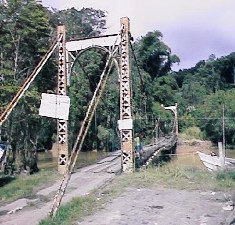 THE LANCE MITAN SUSPENSION BRIDGE
Trinidad
On Carnival Sunday 22nd February 1998, at around 2pm in the afternoon, the Lance Mitan suspension bridge crossing the Moruga river failed. An open van carrying six persons, with a lady walking behind, were on the bridge when it collapsed due to old age and lack of maintenance. Fishermen, based at the side of the bridge, helped rescue the passengers of the submerged van which included two children. No one was seriously hurt and luckily the fishermen’s quick intervention prevented anyone from drowning.
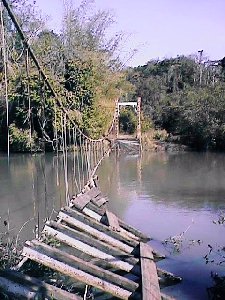 Asa Wright Naiure Centre Lodge
 |
